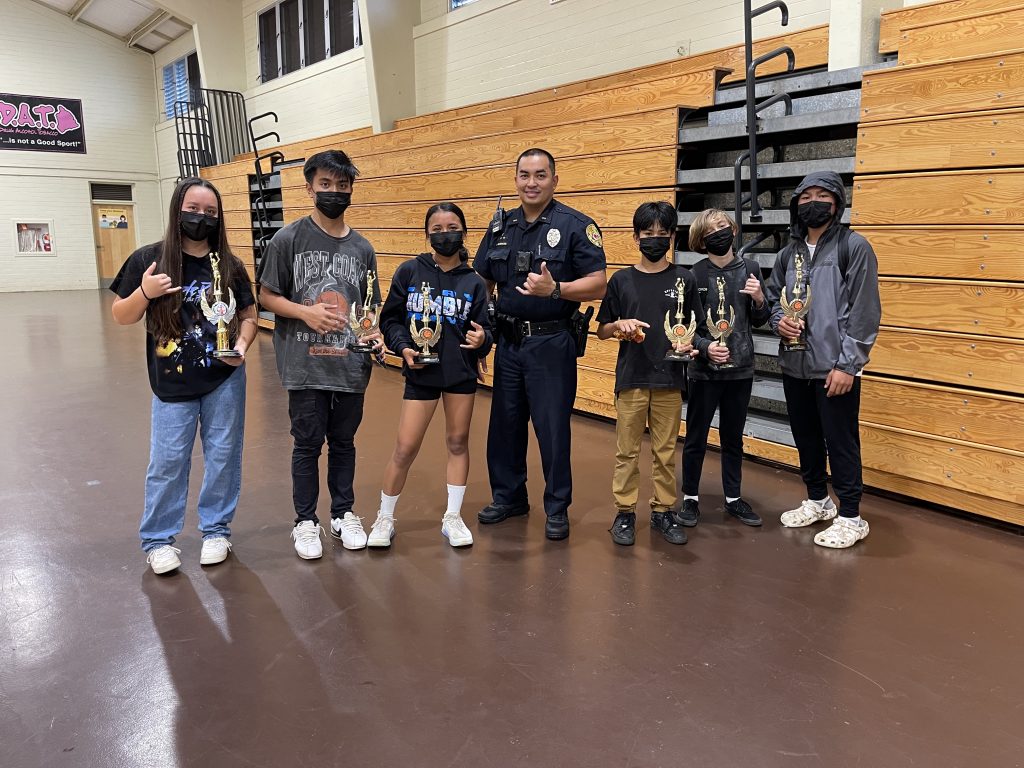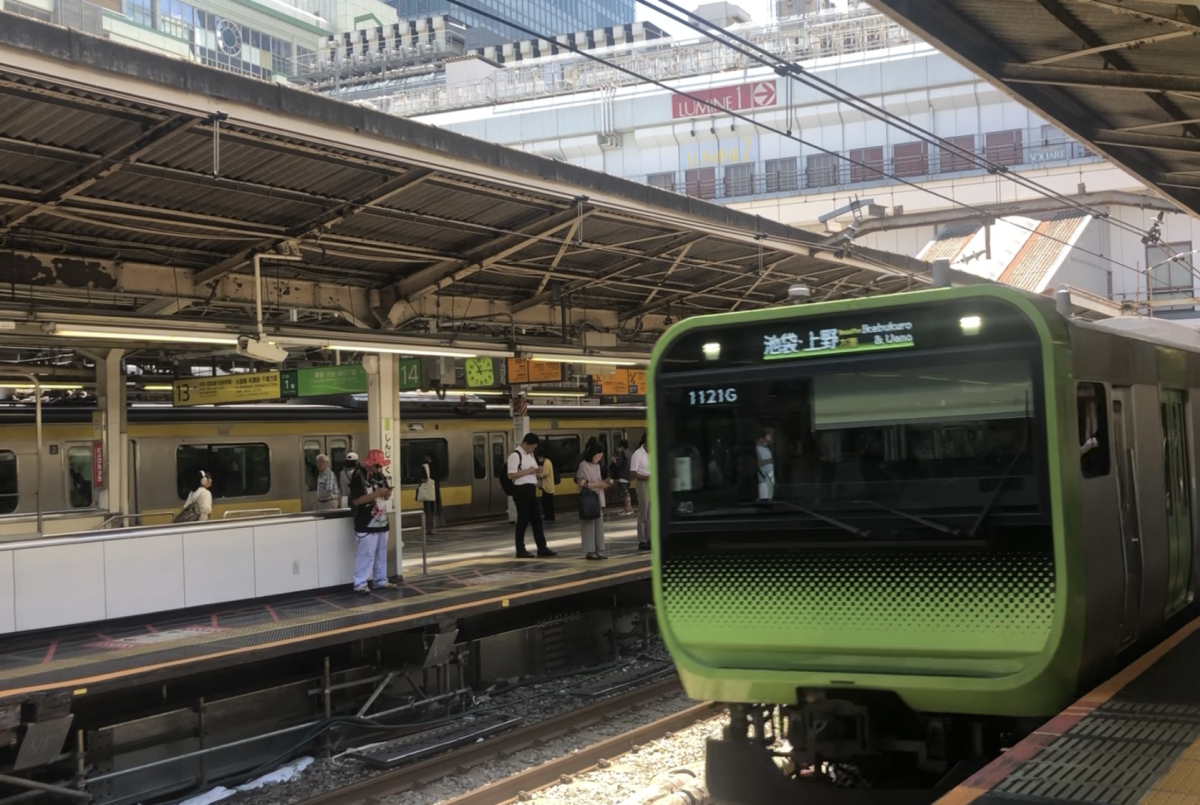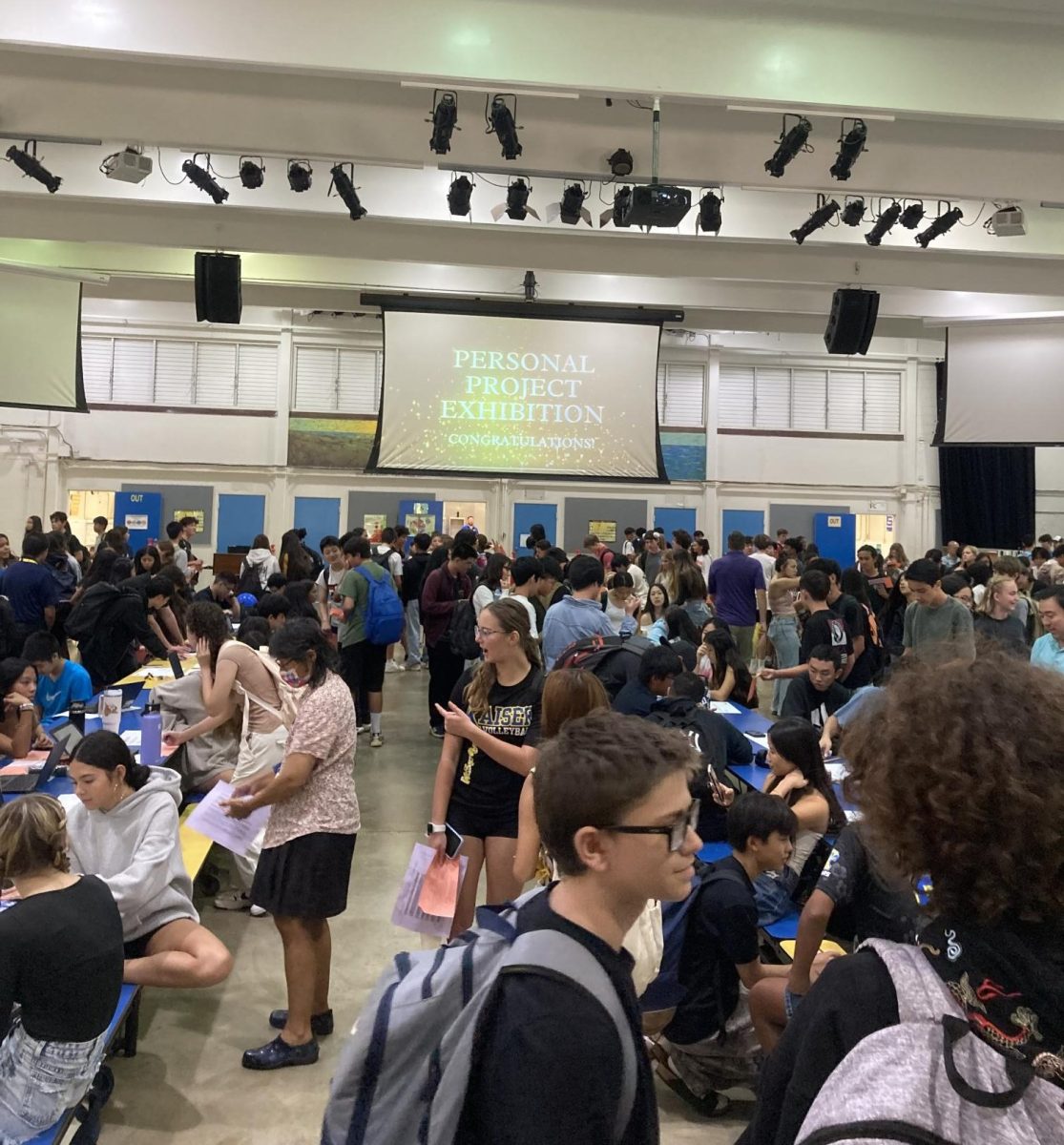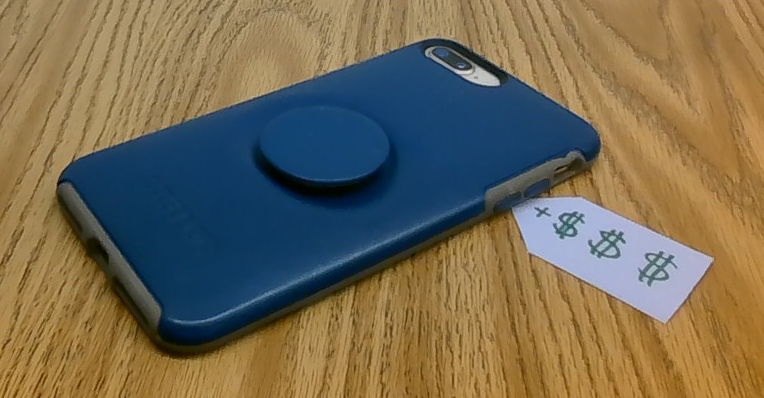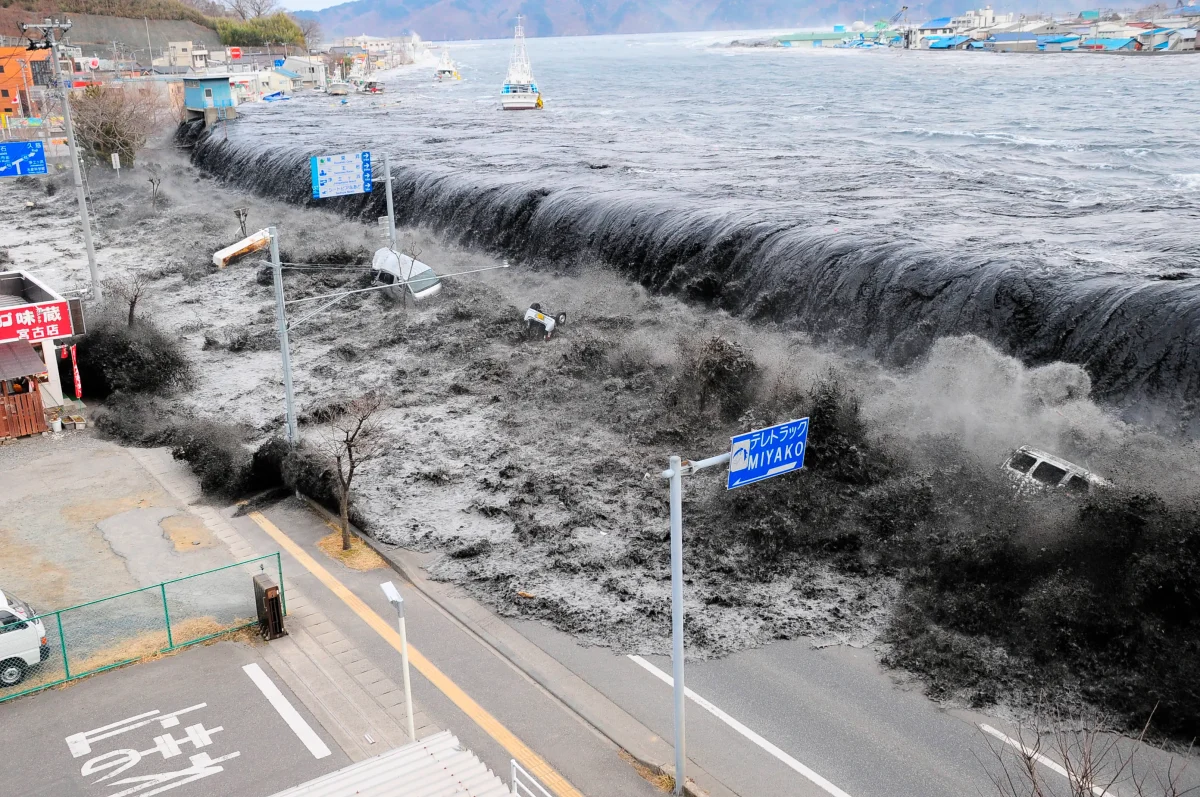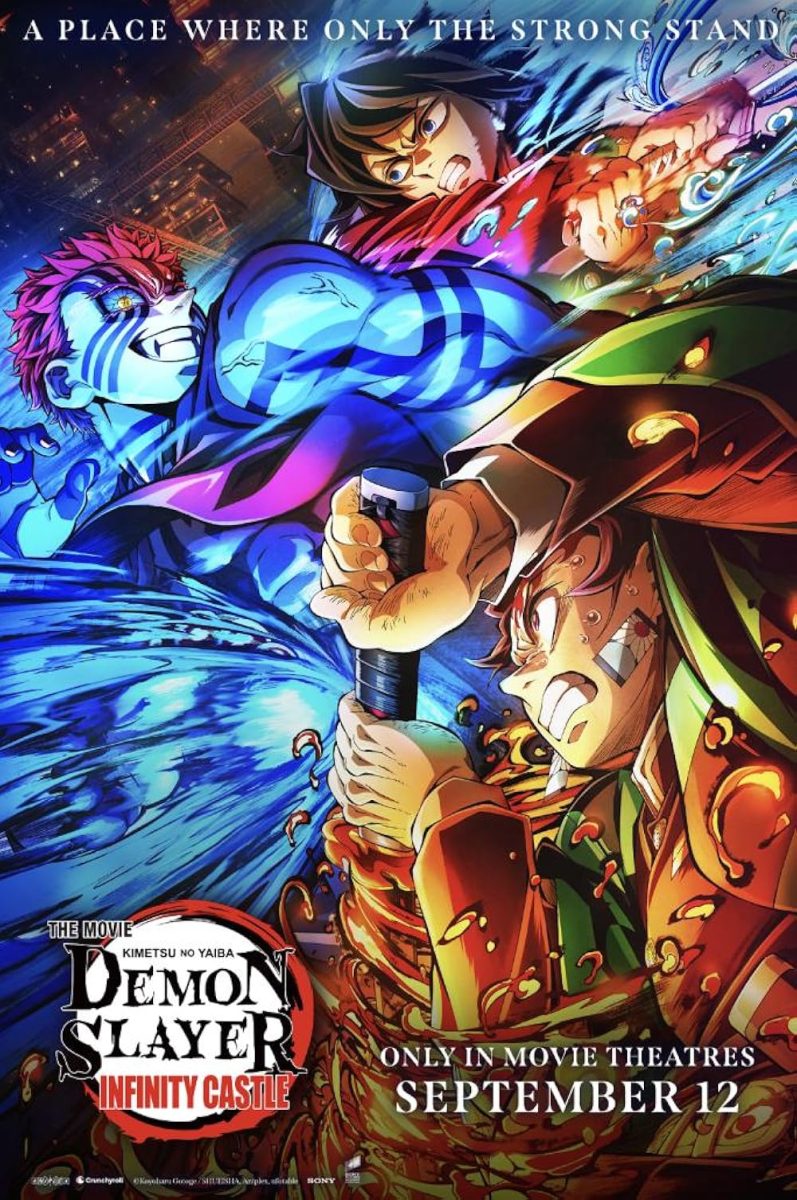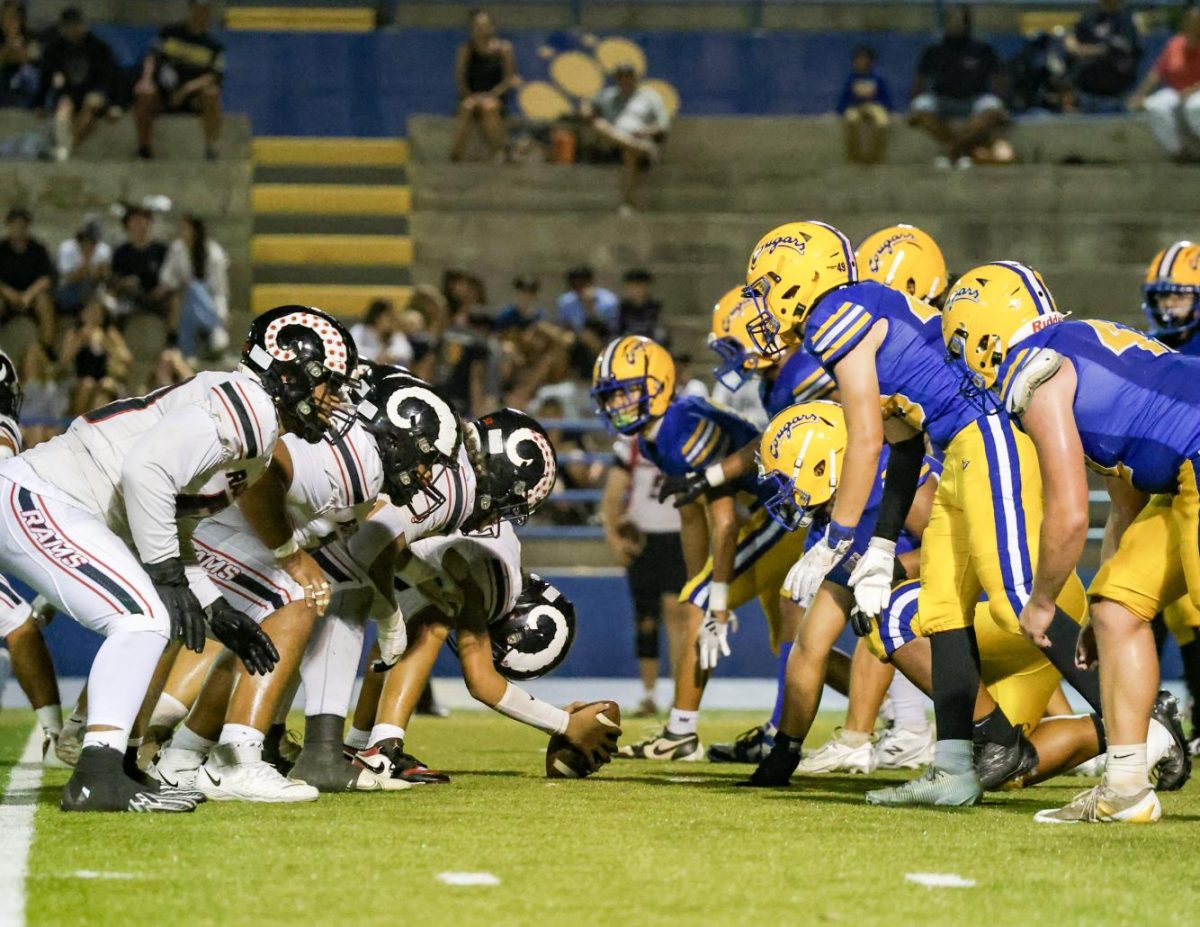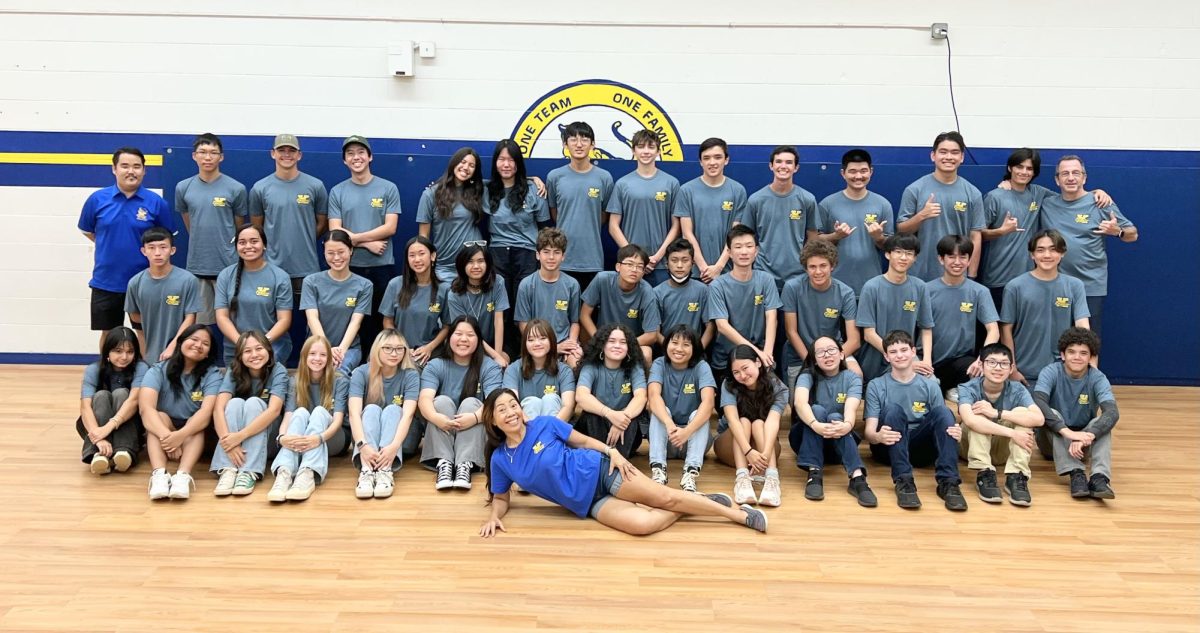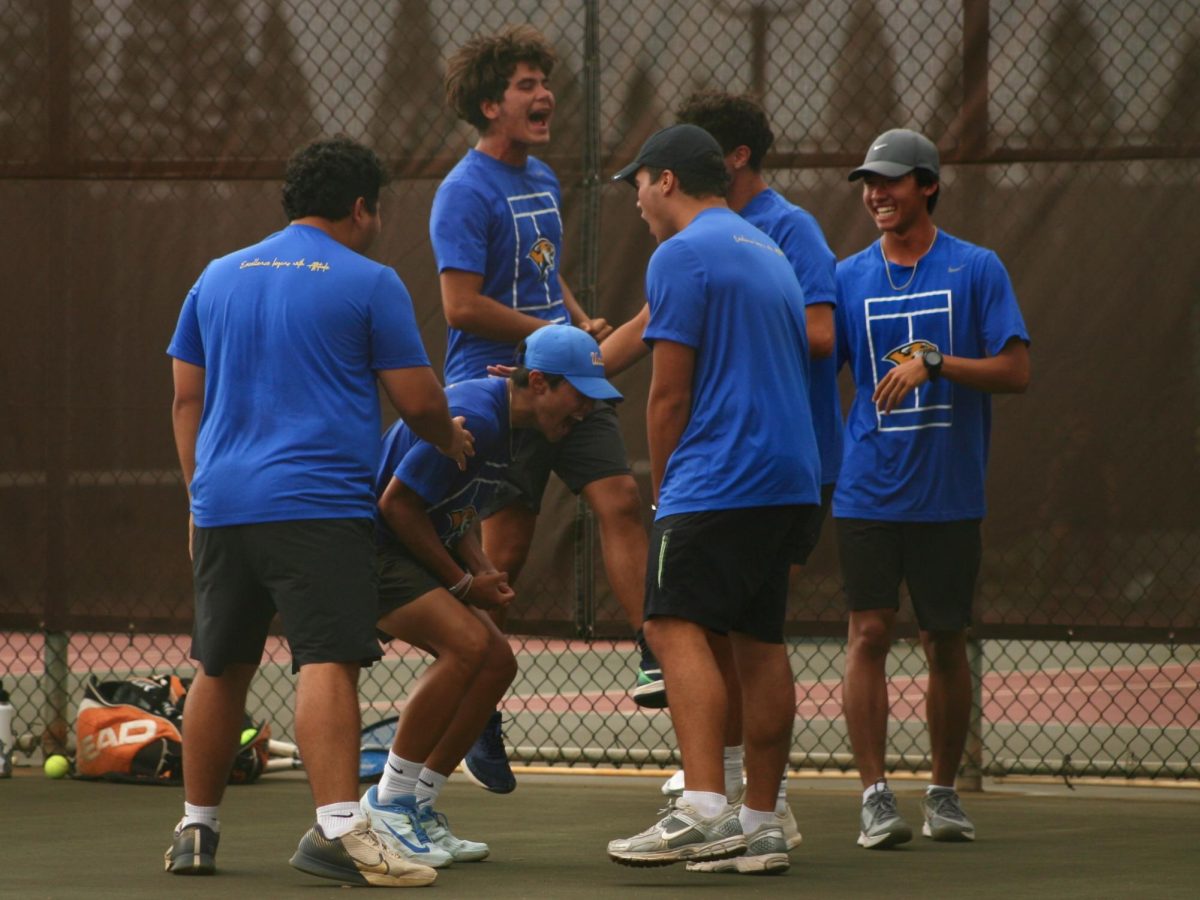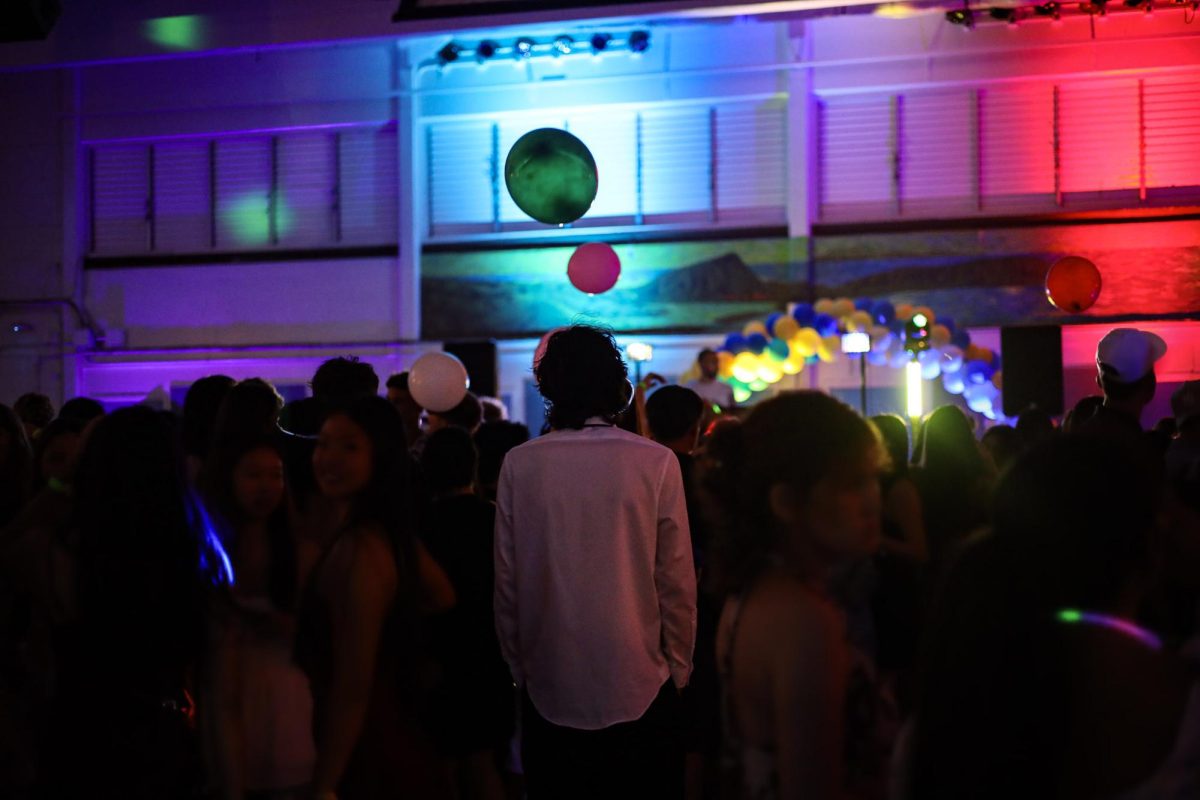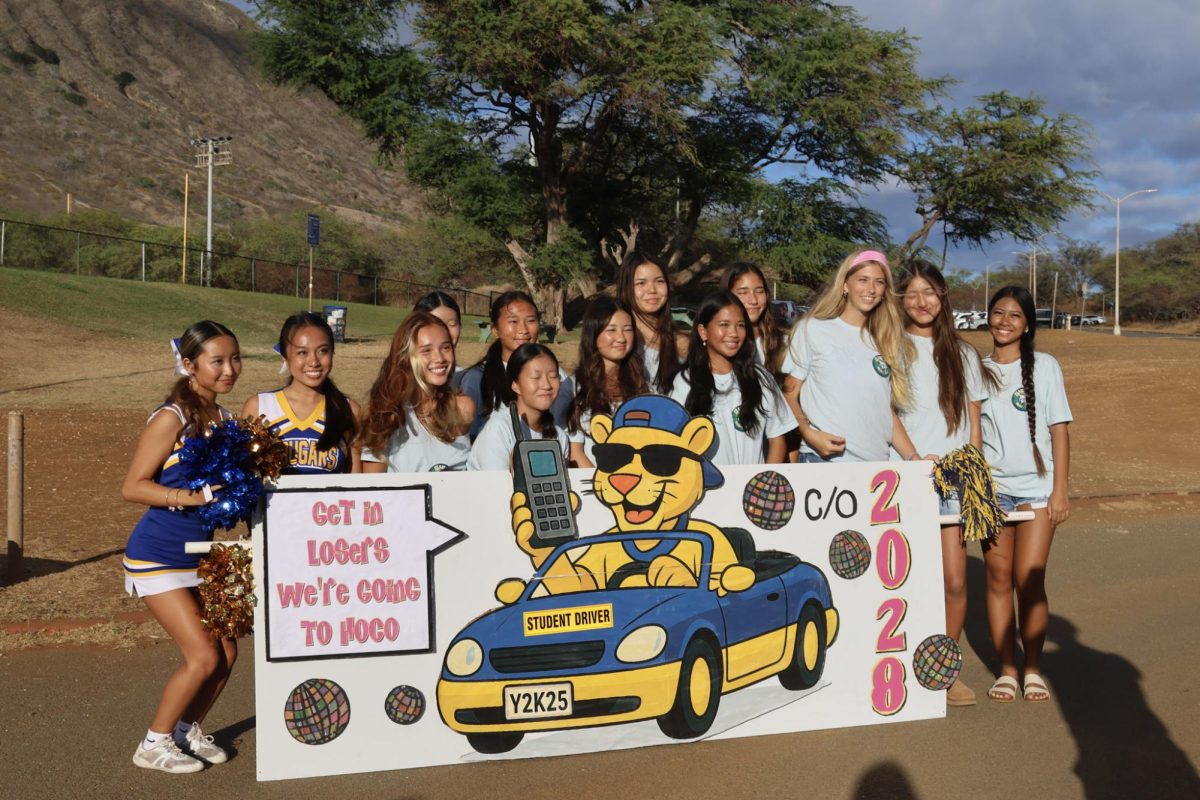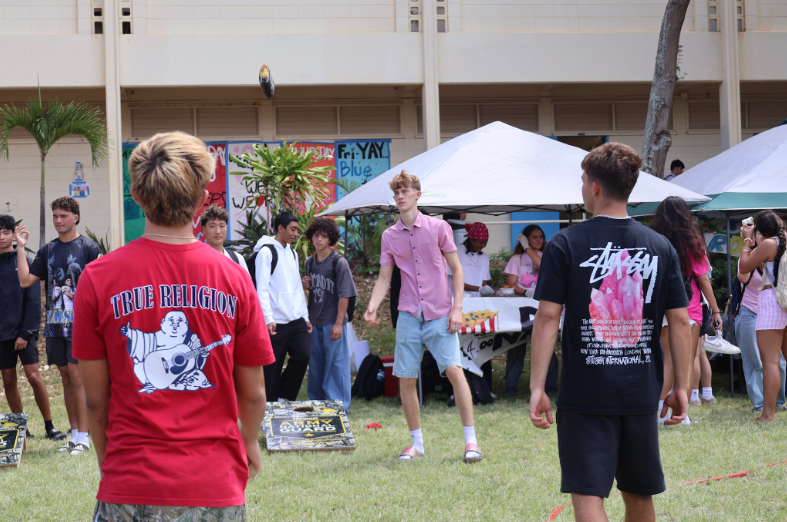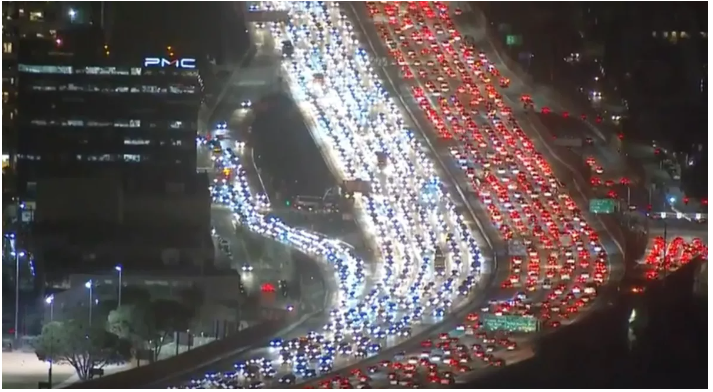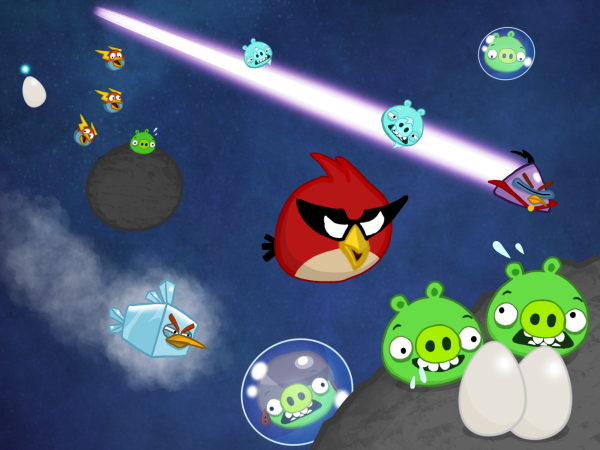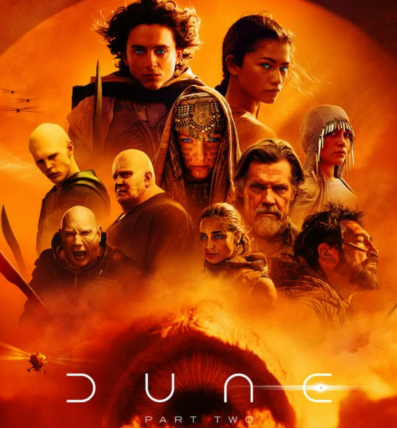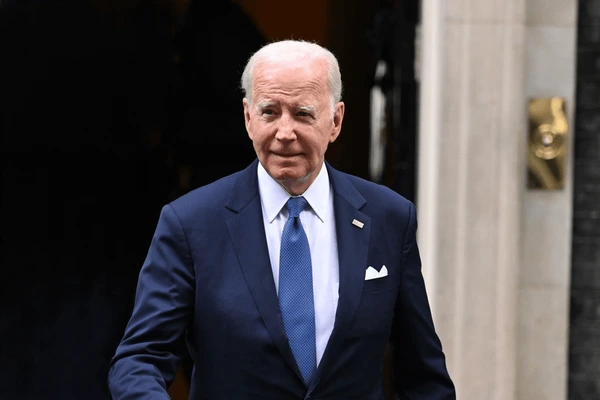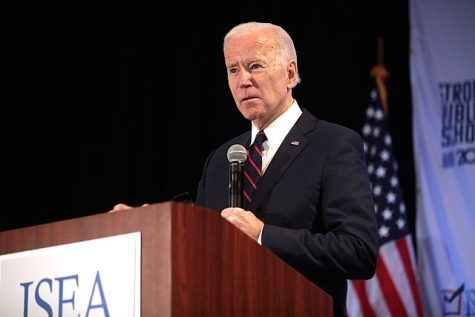Cars Have Destroyed Our Cities
If you’ve ever been in a heated argument with anyone on the internet, surely you’ve been pressed with the argument, “Cars kill more people than guns! Should we ban cars too?” Maybe you’ve considered it for a brief moment, before replying with a, “No, I guess we shouldn’t”, but, is that an answer that can be determined so quickly?
A Society That Cares So Little
“The Global status report on road safety 2018, launched by WHO in December 2018, highlights that the number of annual road traffic deaths has reached 1.35 million. Road traffic injuries are now the leading killer of people aged 5-29 years” according to the World Health Organization (and if you want to put it into perspective, WHO’s Death on the roads expresses the amount of deaths caused by car-related incidents every single day). Click here to check it out.
The world has turned a blind eye to the dangers that cars have posed. They’ve become so ingrained within all structures of life, that it has been simply passed off as effortless transportation and no other titles to signify the turmoil it has caused. This nonchalance towards cars has caused users of the road to become careless; not only of their driving, but what surrounds their environment.
We see it when we’re sitting passenger in the car the most, how people wield their phone in one hand and the wheel in the other, texting someone. Others speed through a red light because they’re late for work, simply because it’s better to be on time than to be the reason someone gets to live another day. Yet, drinking and driving above all, is one of the most selfish acts one can do. Being so out of it, but still continuing to insist that you can drive home. Why must an innocent bystander suffer at the hands of a “it was only one beer” mistake?
Driver’s Ed may be mandatory to receive a license under 18, but how many students actually deem the lessons and stories they hear in Driver’s Ed as important? Despite all the stories we hear about a drunk-driving or speeding accident, why is it that we treat others who keenly follow such laws, with such anger? Is it justifiable to tailgate, honk, or yell at them in response?
In 2018, Kaiser High School friends and family mourned the loss of Jake Braz, a 17-year-old student who was killed in a speeding incident along Lunalilo Home Rd. Braz was driving a truck during the accident, before plowing into a light pole.
“Basically cutting in and out of traffic and trying to get ahead of the traffic. Lost control of the vehicle, ending up impacting the telephone light pole there, or the light pole and the wall. So at this point we believe speed was a factor,” said Lt. James Slayter, Honolulu Police Department. “We believe that he may have been trying to catch up with other friends who were ahead in traffic.”
1.3 million people a year suffer a similar fate to this, leaving 1.3 million families mourning the loss of a loved one. They aren’t just a statistic to fill out a chart with, but real people who lead day to day lives much like our own; who all have hopes and dreams for a future they never got to see.
The Urban Planning Problem
There is no doubt that Hawai’i over the years has turned more into more of a concrete jungle than the ‘paradise’ it’s hailed as. Bustling traffic at every corner, potholes bumbling us across the road, and sidewalk after sidewalk neatly lined with condos.
And cars, more and more cars.
Hawai’i barely holds the charm it once had. Parents and grandparents are only able to share mere memories of what once was, and what will never be seen again to the new generations of families.
“It isn’t the same as it was when I was a kid, more and more buildings, condo after condo; it just never stops. You have to wonder if there will be any natural beauty to even enjoy.” said one resident.
For such a small island, you would think that there wouldn’t be the abundance of highways and freeways littering our land. That the population would be more reliant on biking, walking, or a system of transport in place that’s reliable and efficient to travel by, but no, there isn’t.
The state’s urban planning is a mess, construed of ideas that are thrown in wherever and whenever it’s deemed fit.
Of course, from a tourist’s perspective, you might note how areas you have walked in yourself are deemed ‘pedestrian-friendly’, most notably Waikiki of all, the rest certainly isn’t.
In an anonymous survey, individuals have voiced their opinions on some of the ‘non-pedestrian-friendly’ areas in Honolulu:
Kapiolani Blvd next to Ala Moana Center

Captured in the photo above is Kapiolani Blvd next to Ala Moana Center. It is a road comprising 6-lanes passing along the center. Within this mass of roads, there are only small islands of concrete for pedestrians to stay on while they wait to cross. Half the time when crossing is available to them, they are nearly always cut off by a car making a right turn, almost as if they aren’t even aware of their existence.
Moanalua Gardens underneath Puuloa Road
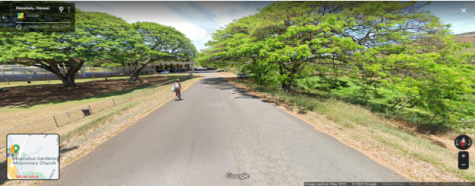
The photo captured above is the road next to Moanalua High School, just below Puuloa Road. Currently, Moanalua Gardens can only be accessed via the exit of a freeway off-ramp. Even as featured in the Google Car photo, it’s visible that a person walking to the area must walk on the road, which is highly dangerous and impractical.
Pacific Heights
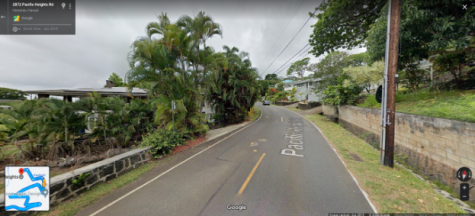
Pacific Heights is one of the old neighborhoods of Honolulu during the major housing construction of the 1920’s and 30’s, and because of that, like most old neighborhoods, doesn’t have sidewalks lining its roads. This makes areas undoubtedly dangerous for the possibility of a pedestrian fatality occurring. It is quite common for an accident to happen in such a “well-known” area to a driver. With familiarity comes speed, with speed comes recklessness, and then an accident occurs.
These are only a couple of areas that individuals have noted as being notoriously irritating and dangerous for pedestrians, and there are still countless areas that aren’t accommodating that haven’t been cited.
And if you think that Oahu isn’t pedestrian friendly- well, I have some bad news for you on the urban planning disaster that is outer more rural islands like Kaua’i and the Big Island. Good luck on navigating those islands by foot.
Coincidence or Convenience
One thing I’ve wondered about for quite some time is how we became so hooked – so reliant on online shopping. Not just in regards to clothing and appliances, but the rise of companies like DoorDash, Instacart, and Uber Eats, which promise the deliverance of food right to your doorstep with a few clicks of a button.
The convenience factor has a lot to do with it, but is it really what boils down to the popularity behind these companies?
Affordability isn’t something that comes to mind when you think of delivery services, especially in support of companies like Instacart, which run high with their fees.
Here are some of the Instacart’s price fees, as provided from Insacart’s website:
- $3.99 delivery fee for groceries under $35
- 5% of total bill for service fee that finances the app and operating costs
- Long-distance charge fee that varies
- Instacart set tip of 20% of entire bill (though can be adjusted)
- Retail prices generally more expensive ($3.50 milk turning into $4.00 via app)
This doesn’t even include the expenses for the driver themselves, which is well above more than what you would pay for if you obtained the groceries yourself.
Quite interestingly enough, Atlanta, one of the biggest consumers of services like Instacart, is also one of the highest densities of cities with food deserts – places where healthy food is practically impossible when you’re surrounded by stores selling only pre-packaged foods.
Of course food deserts stem from the more prevalent issue of poverty – the two do coincide with one another.
Food deserts also stem from improper infrastructure in public transportation, as well as reliability to use a car, which cities like Atlanta need to meet most needs after a certain extent of walking.
Cars ultimately have made our environment less walkable, putting our grocery stores further away from us, our entertainment, and the prospect of window shopping meaningless in this age.
Hope Still Exists
So is that it? Is this what dooms humanity? The impending future of automation, the very thing that was meant to make our lives easier?
Home after home becoming inaccessible from common necessities, reckless driving the result of the normalization of it, and the death of shopping in-person.
Of course, this isn’t our fate – it can’t always be.
Humanity as a whole has gone backwards in terms of walkability in the last couple of decades, but, this isn’t to say things haven’t been implemented to change that.
There are many cities currently out there that have already been making changes to the way they plan their streets, making it much more welcoming to the average pedestrian.
One of many examples would be the Ithaca Commons in upstate New York, which has pedestrianized their downtown area into a walk-able area to window shop and such.
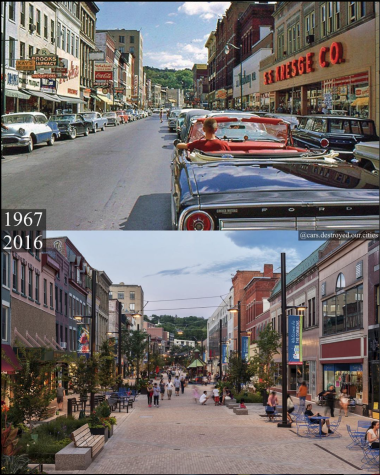
Larimer St in Denver Colorado itself, has managed to make major revisions to it’s layout in only 6 years, going from a two-way street, to a street that’s now entirely pedestrian-friendly.

Hawaii can take an even more pedestrian friendly approach than most cities, especially considering its beautiful nature that should be utilized to create a deemed ‘paradise’ that most people would describe it as.
Even the little things can contribute to a much cleaner, healthier environment to live in. Public transportation is one way we can influence more cars off the road, while also allowing for automated transportation to take place.
“I think the best way to get people to take public transportation is to get them to try it out at least once! Once they hop on a Biki bike in town, take the bus to the grocery store, or even walk, they are more likely to experience all of the benefits of these modes and be excited to use them. We also need to remind people that they don’t necessarily need to exclusively take public transportation–even just replacing a few of their commutes (to the beach, grocery store, wherever!) Each week can have a huge impact on our environment and health!” says Tabatha Knudson, the Mobility and Equity Coordinator of Blue Planet Foundation.
Now, this isn’t to say that cars are merely gas-guzzling machines that have ruined our lives – which is far from the case.
Private transportation allows for individuals to be more in control of their time, as oftentimes public transportation isn’t always a reliable source of transport.
One of the many reasons people choose not to take public transportation such as the bus, is because of the time slots available to riders, which often come in intervals of an hour. This can be quite impractical for riders when you happen to accidentally miss the bus.
Cars shouldn’t be discredited for the good that it brings for society, but reforms need to be made to accommodate for the negatives that it’s introduced to our society.
Change towards a more sustainable city can be achieved – but it will be a lot of work before we truly get there.
Your donation will support the student journalists of Henry J. Kaiser High School. Your contribution will allow us to purchase equipment and cover our annual website hosting costs.

Madison Miyoi is a senior at Kaiser High School, and a newly joined member of the news writing team of Kaiser. In her free time, she enjoys reading science-fiction...
